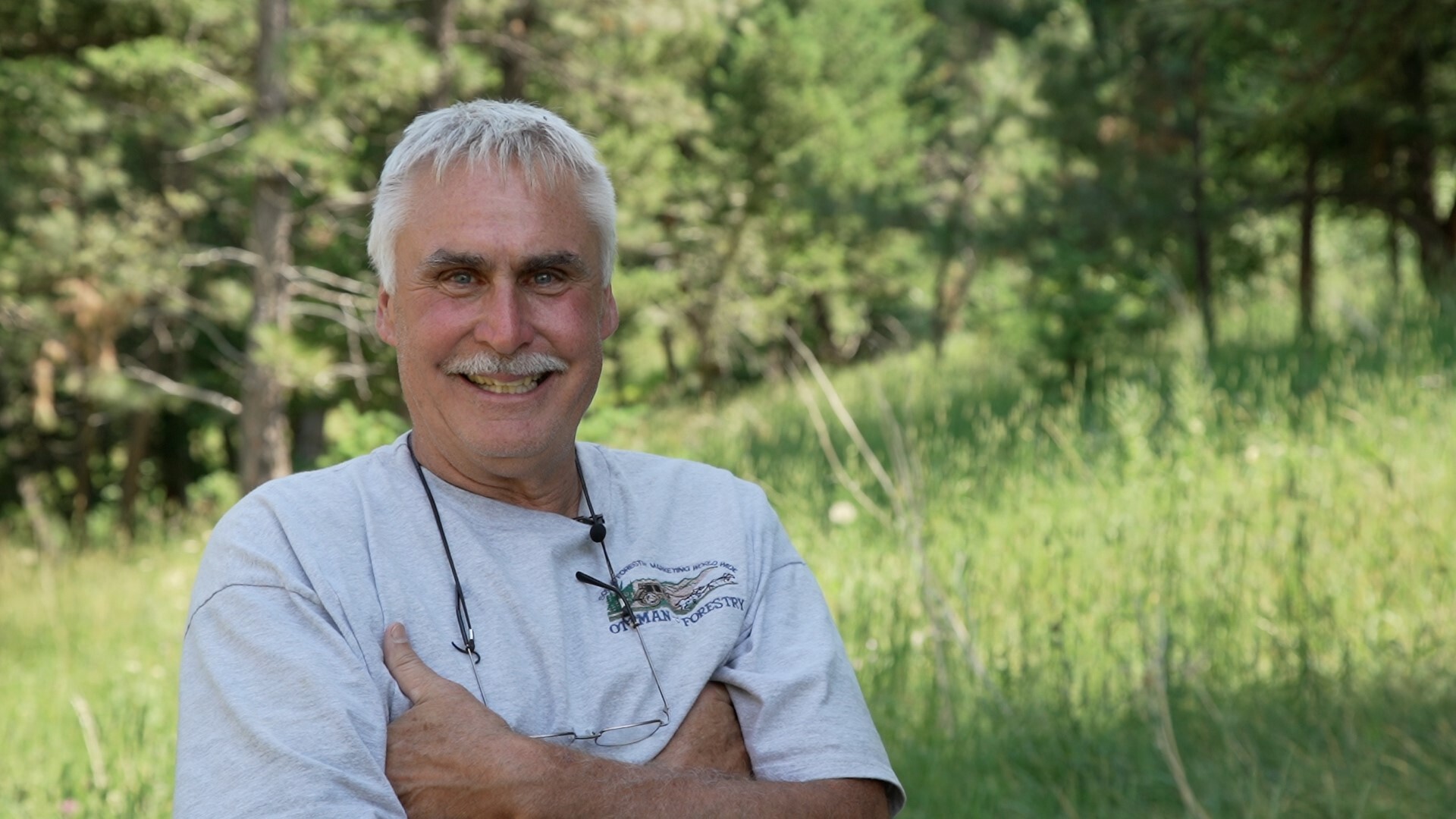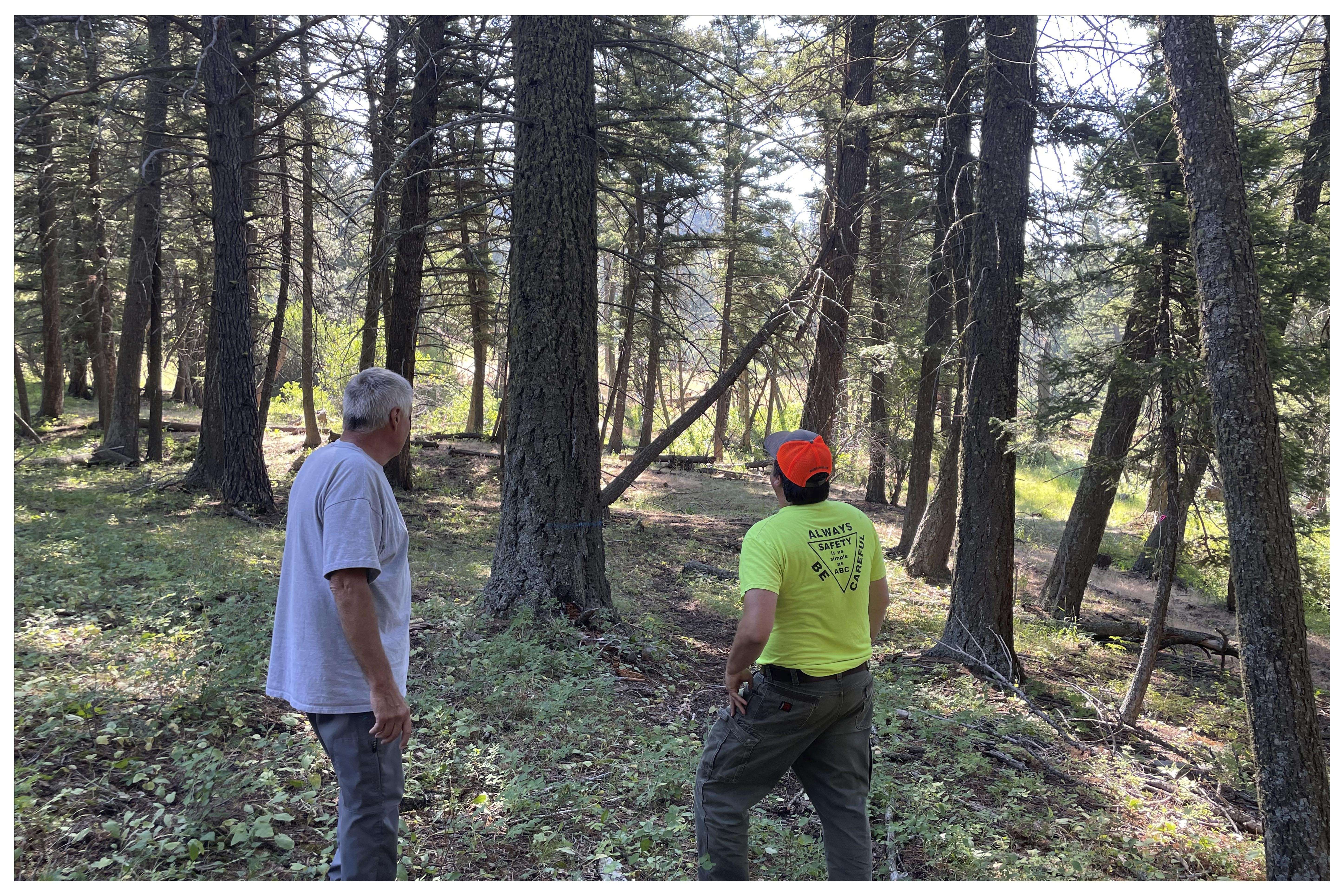"The profession of forestry serves society by fostering stewardship of the world's forests. Because forests provide valuable resources and perform critical ecological functions, they are vital to the well-being of both society and the biosphere." - The Society of American Foresters.
Foresters dedicate their entire careers to learning how to take care of forested lands properly. Their job is to help guide public and private landowners on how best to treat and manage the land to create and maintain healthy forests that support clean air and water, preserve wildlife habitat, and help prevent catastrophic wildfires. Foresters are stewards of the forests and experts in management practices. That's why Marks Lumber and the entire timber products industry rely on foresters for guidance in management decisions.

In order to help us better understand the role of the forester, we asked John Ottman, founder of Ottman Forestry Consultants, to discuss his work and how we can help foster healthy forested lands. Ottman has worked in the woods for the past 40 years, assisting private landowners in creating and maintaining their acreage. Between working in the woods, hunting, and hiking, Ottman is the epitome of a true outdoorsman. His love for the land and years of experience have made him an expert on forest health issues. Our discussion with Ottman made one thing very clear: We need to look to foresters and loggers for guidance on how to properly treat and maintain lands to create healthy, resilient forests.
The Healthy Forest
There is no one-size-fits-all prescription for creating and maintaining healthy forests. Landowner objectives vary, and each forest will require different treatments. Foresters must know how to adjust prescriptions according to these objectives, all while considering the conditions of the forest, wildlife habitat, constraints in the landscape, and much more. Ottman describes how diversity is a crucial component of forest health, emphasizing that, in order to achieve a "mosaic" of forested lands, we need to apply each of the basic silvicultural practices. These include clearcut, seed tree, salvage, sanitation, and shelterwood. Each of these prescriptions plays a role in creating healthy, managed forests.
The Basic Silviculture Prescriptions According to the U.S. Forest Service
Clearcut: The clearcut prescription is a treatment where all trees are removed in one operation. This prescription is used to produce even-aged stands. However, clearcuts can also leave "reserve" trees to achieve other management objectives, which results in a two-aged stand. Clearcutting is often used on Lodgepole pine stands as they are homogeneous in nature and are highly susceptible to insect infestations and disease.
Seed Tree: Seed tree prescriptions focus on removing the majority of a mature stand, leaving a small number of trees that will be used for regeneration. The seed tree method is a two-step operation where the first cut is used "to establish a new age class," and the second cut removes the seed trees or the original trees that were left for regeneration.
Salvage Cutting: The salvage method focuses on removing dead or lame trees before they decompose and are no longer a commercially viable resource.
Sanitation Cutting: Sanitation cutting removes trees with a focus on stopping the spread of insects or disease.
Shelterwood: The shelterwood prescription is a method used to produce an uneven-aged stand, where space is created for a new age class to generate beneath the cover of the remaining trees. This prescription is a three-staged cutting, where the first cut removes the sick and lame trees, the second identifies the dominant trees and establishes the microenvironment, and the third eliminates trees in each age class and prevents overgrowth.
Each of these prescriptions provides essential maintenance for the forests and helps create the diverse lands that Ottman advocates for. Thoughtful consideration is required on the part of the forester and landowner before the treatment is even prescribed, and the ground must be walked and assessed before they decide what stays and what should be removed. However, each step in the process needs to take place out on the ground of the forest.

It's the Tree You're Leaving, Not the Tree You're Cutting
Once the forester and landowner decide on the proper prescription for each stand, the forester must determine which trees stay and which will be removed. Ottman stresses how tree marking is a critical part of his job. When asked, "what makes a good forester?" he replied, "Bottom line: On the ground, tree marking. Every stand needs to be tree marked, and we need to know what's going on in the landscape."
Knowing what's happening in the landscape is a crucial part of a forester's job, as the surrounding environment also impacts how they decide what trees to remove. As Ottman states, "It's the tree you're leaving, it's not the tree you're cutting," meaning our primary focus should be on creating healthy forests. To do that, we must focus on creating a diverse and balanced ecosystem that is resilient to outbreaks, infestation, and natural disasters.
Ottman describes how, in order to do this, foresters consider the species, the profile of each tree, and the spacing between each crown. Additionally, wildlife habitat, environmental obstacles such as wetlands and streams, wind cover, and vegetation are just a few of the many other factors that foresters must assess when trying to create healthy forests.
A Vision For the Future
Ottman goes on to describe some of the challenges of these decisions and the common misconception that active forest management always needs to be green. What foresters have learned is that a healthy forest isn't going to be perfectly green. They need to have dead trees, young trees, and old-growth trees to create these "mosaics" that Ottman discusses. "The more mosaics you have, the more wildlife, plants, animals, insects, and birds you will have," says Ottman. Creating these types of forests won't always look pretty.
It's important to remember that being out on the ground allows foresters to assess how to effectively treat a particular landscape, achieving the landowners' goals while maintaining biodiversity. "You're going to start off with one heck of a mess," Ottman emphasizes, "but you have to have that vision at the end, and now you own these additional acres. Maintain it, and everything will grow around it. If you manage the timber correctly, it will grow, and it will respond. It all comes down to being on the ground."
What We Can Do
While the forester plays a critical role in forest management decisions, it takes a village to create healthy forests. The timber products industry, loggers, and foresters work hand-in-hand, helping achieve these land management objectives. At Marks Lumber, we work with quality foresters like John Ottman to help produce sustainable lumber products that ultimately help foster beautiful, resilient, multi-use forests that we can all enjoy for years to come.
Private landowners also play a large part in achieving healthy forests, especially since around 56% of forest land in the United States is privately owned. However, just because you don't own forest land doesn't mean you can't help advocate for responsible forest management. Forest health is everyone's business, as it affects our air quality, water quality, wildlife, public access, and safety. If you would like to show support for the forest managers and the timber products industry, contact your local representatives and senators.

Acknowledgments
Marks Lumber would like to thank John Ottman of Ottman Forestry Consultants for taking the time to discuss forest management practices and his love of forestry. His years of work in the forest have had a significant effect on the land, landowners, and the citizens of Montana.
